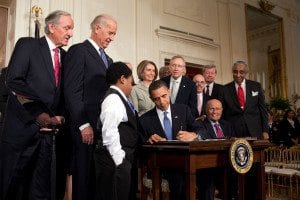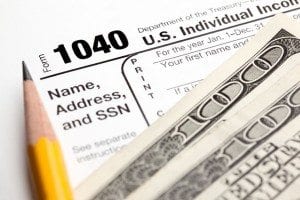Millions of Americans who received subsidized health insurance under ObamaCare will find a new wave of frustration this tax season.
After losing their health insurance because it was not ObamaCare compliant…after slogging through the healthcare.gov website to get enrolled in a new policy…after losing their doctors…after learning that they must pay thousands of dollars in deductibles before they can get medical care…now they must face the IRS.
By the end of the month, they should receive a form 1095-A that shows they had health insurance through federal or state exchanges. They will use the form to fill out an astonishingly complex Form 8962 to reconcile the subsidies they received with the income they earned in 2014.
If they received too much, they will have to pay back some or all of the subsidy. That could mean they receive a smaller – or no – tax refund. And for the privilege of this new interaction with the IRS, many will have to pay hundreds of dollars to hire a tax preparer to help them wade through these new ObamaCare tax forms.
Yes, ObamaCare is getting worse.
H&R Block HRB 0% estimates that up to half of Americans who received subsidies for health insurance under the ACA last year will owe the IRS money.
An estimated 87% of those who signed up for health insurance on the new exchanges got subsidies to reduce their health insurance premiums and sometimes their cost-sharing expenses. An assistant professor of health policy at Vanderbilt University, John Graves, calculates the average subsidy was $208 too high.
But these taxpayers face yet another cost. Many of them are accustomed to filing the simple 1040EZ tax form. No more. Most will have to retain tax preparers to help them fill out the new Form 8962. That could cost them several hundred dollars.
The form is used for taxpayers to prove that they and everyone in their family (including children) had health insurance every month of last year, what their incomes were, how much of a subsidy they received, whether they are married, single, legally separated, etc. The examples in the instructions are a window into the complexity of family arrangements in America and, still, people surely will come up with hundreds more permutations.
The instructions are mindboggling in their complexity. They take up 15 pages of fine print and will challenge the most seasoned tax preparer. A one-sentence example: “Column B. Enter on lines 12 through 23, column B, the amount of the monthly premium for the applicable SLCSP [second lowest cost silver plan] reported on Form 1095-A, lines 21 through 32, column B.”
It continues, “If during 2014, your coverage family changes and you did not notify the Marketplace, or no APTC [Advance payments of the premium tax credit] was paid, the premium for the applicable SLCSP reported on your form(s) 1095-A may not be accurate…” It then provides a handy link to another IRS document to explain what you should do if that happens. The instructions go on and on like that for 15 pages.
If taxpayers have to pay back some or all of the subsidy, the instructions explain a new layer of complexity: People who make less than 200% of poverty, or about $23,000 for an individual, will owe only $300, even if they received thousands of dollars more in subsidies. If you make up to the 400% of poverty, or $46,000, you could owe $1,250. If you earned $46,500, which is just over the limit to qualify for subsidies, you will have to pay it all back – likely several thousand dollars.
And if you didn’t have health insurance last year, you will have to pay a fine of $95 or 1% of your modified adjusted gross income. A couple making $65,000 would have to pay a fine of about $450, for example. The “tax penalties” increase this year and next.
Can it get any worse? Yes.
Nina Olson, an IRS watchdog, estimates that 47% of those calling the IRS for help in filling out their tax returns won’t get their calls answered during tax filing season. Those who do get through will wait an average of 34 minutes to talk to someone, she estimates.
Tax preparers calling the “priority service line” will have to wait an estimated 52 minutes to talk to an IRS expert. IRS Commissioner John Koskinen admitted, “We do as well as we can. And ‘as well as we can’ is still going to be miserable.”
The vast majority of Americans who did not receive ObamaCare subsidies for health insurance will simply have to check a box on their regular tax form attesting that they had health insurance. Employers and health insurance companies will be sending them a form 1095-B or 1095-C, which they will attach to their taxes as proof of coverage.
The individual mandate is one of the most detested provisions in the health law, and the first tax season when people must comply will create a new level of outrage about the law, its intrusiveness, and the hidden costs in fines and hidden taxes that millions of Americans will face.







